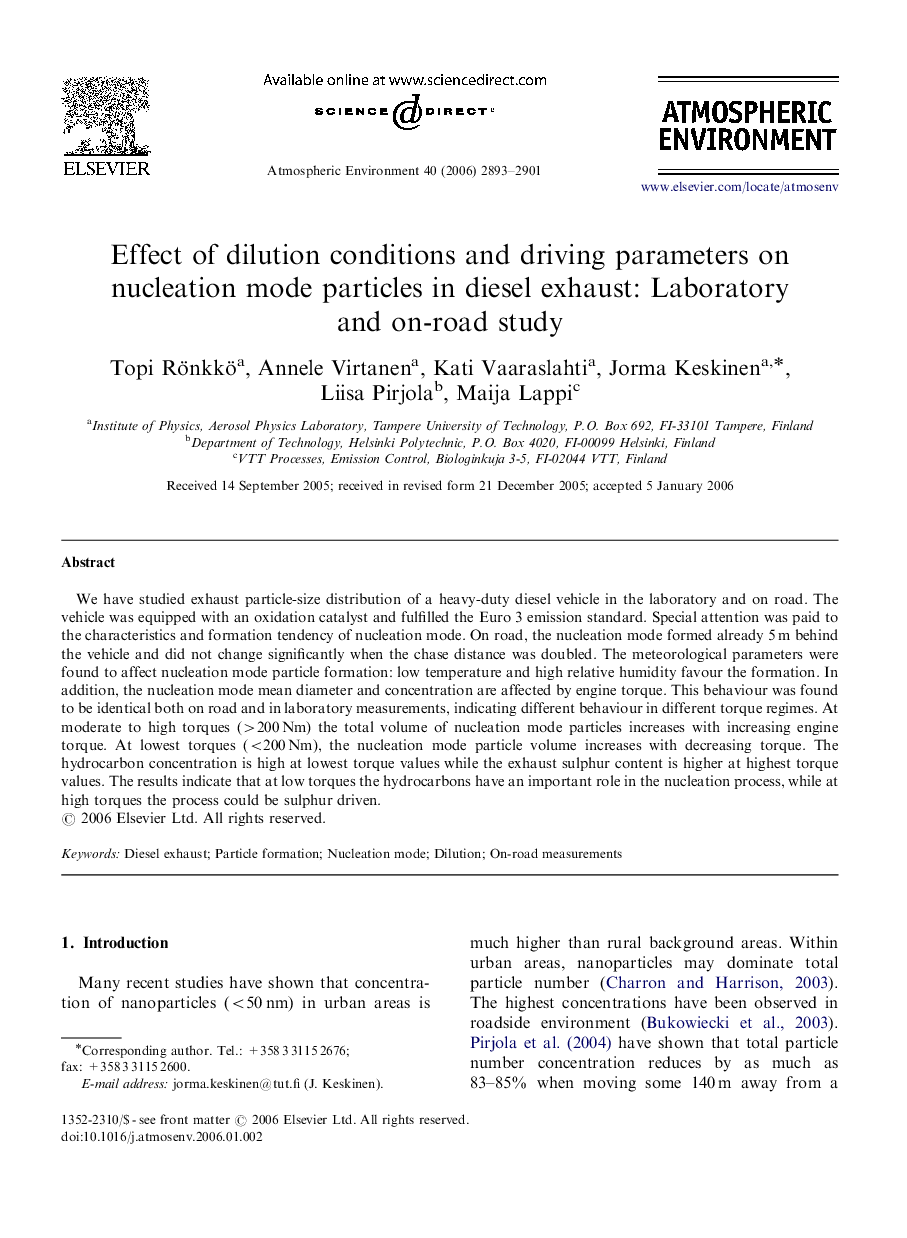| Article ID | Journal | Published Year | Pages | File Type |
|---|---|---|---|---|
| 4444902 | Atmospheric Environment | 2006 | 9 Pages |
We have studied exhaust particle-size distribution of a heavy-duty diesel vehicle in the laboratory and on road. The vehicle was equipped with an oxidation catalyst and fulfilled the Euro 3 emission standard. Special attention was paid to the characteristics and formation tendency of nucleation mode. On road, the nucleation mode formed already 5 m behind the vehicle and did not change significantly when the chase distance was doubled. The meteorological parameters were found to affect nucleation mode particle formation: low temperature and high relative humidity favour the formation. In addition, the nucleation mode mean diameter and concentration are affected by engine torque. This behaviour was found to be identical both on road and in laboratory measurements, indicating different behaviour in different torque regimes. At moderate to high torques (>200 Nm) the total volume of nucleation mode particles increases with increasing engine torque. At lowest torques (<200 Nm), the nucleation mode particle volume increases with decreasing torque. The hydrocarbon concentration is high at lowest torque values while the exhaust sulphur content is higher at highest torque values. The results indicate that at low torques the hydrocarbons have an important role in the nucleation process, while at high torques the process could be sulphur driven.
